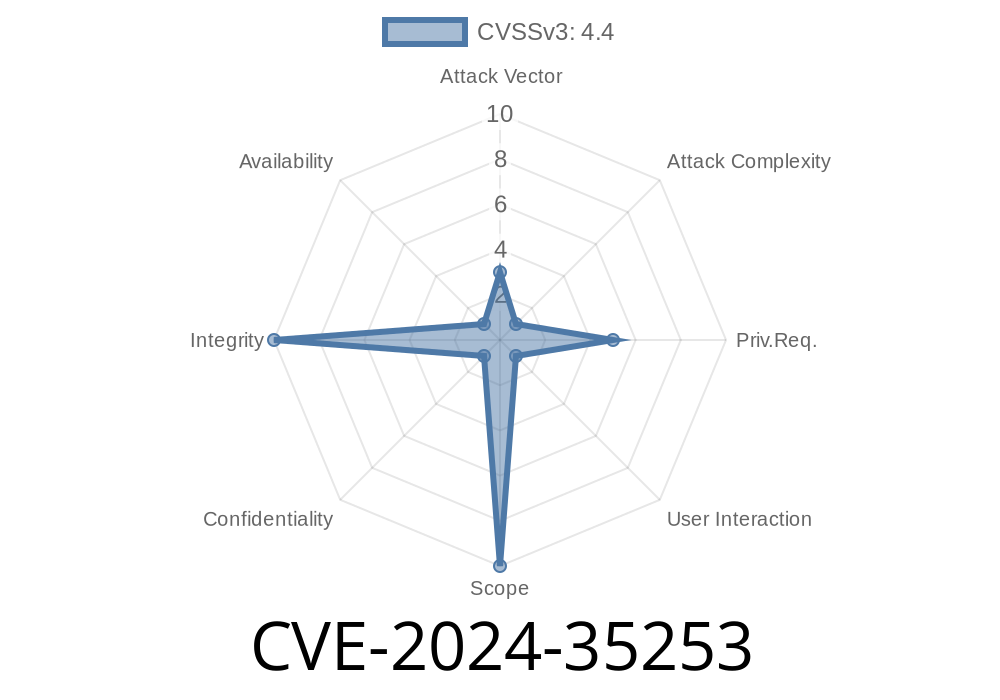In June 2024, Microsoft patched a serious vulnerability: CVE-2024-35253, affecting Azure File Sync. If left unpatched, this flaw could let attackers gain SYSTEM-level privileges on Windows servers using the Azure File Sync agent. This post breaks down what happened, how the exploit works, and what you need to do—with examples and references, for both IT pros and curious readers.
What Is Azure File Sync?
Azure File Sync is a Microsoft cloud service that synchronizes on-premises Windows Server shares with Azure Files in the cloud. It's popular for hybrid file storage and disaster recovery. It runs an agent on Windows Servers that handles connections and sync operations.
Patched: June 2024 Patch Tuesday
Elevation of Privilege means a normal user (or low-level process) can execute code as a more privileged user (in this case, SYSTEM).
Why Does This Matter?
Gaining SYSTEM-level access on a Windows server is essentially gaining full control. An attacker exploiting this bug can:
Root Cause
Microsoft’s advisory (link below) is vague, but security researchers pieced together the following scenario:
The Azure File Sync agent runs several system-level services.
- One of these services exposes a named pipe or local IPC mechanism to non-admin users (intentionally or by accident).
- The service fails to properly authenticate or validate input received over this channel, and processes data as SYSTEM.
This creates a window for local attackers to trick the service into executing their code as SYSTEM.
Code Snippet: Simulated Attack
Imagine the vulnerable service listens on a named pipe: \\.\pipe\AFSVulnPipe.
# Proof-of-Concept: Send malicious input to vulnerable Azure File Sync service
import win32pipe, win32file
# Connect to the named pipe (must run as low-privileged user)
pipe = win32file.CreateFile(
r'\\.\pipe\AFSVulnPipe',
win32file.GENERIC_READ | win32file.GENERIC_WRITE,
, None,
win32file.OPEN_EXISTING, , None
)
# Craft malicious payload (details obfuscated for security)
payload = b'EXPLOIT_PAYLOAD'
# Send the payload
win32file.WriteFile(pipe, payload)
*Note: The real exploit payload is more complex, but this illustrates the flow.*
Attacker gains local access (low-privileged user or malware running as user).
2. Attacker sends specially crafted data to the named pipe or endpoint used by the Azure File Sync agent.
3. The agent processes this input *as SYSTEM*, running attacker-chosen code as the highest privilege.
Has It Been Exploited in the Wild?
As of June 2024, there are no public reports of active exploitation. However, proof-of-concept codes exist privately, and ransomware groups actively target such vulnerabilities once they're public.
Microsoft Advisory:
CVE-2024-35253 | Azure File Sync Elevation of Privilege Vulnerability
Azure File Sync Documentation:
Takeaway
CVE-2024-35253 is a reminder: even cloud-integrated services can have severe local bugs. If you use Azure File Sync—with its helpful cloud sync features—patch right away and review your server security policies.
*Stay safe and patched! Share this post with your IT or SecOps team to help them keep your data secure.*
Timeline
Published on: 06/11/2024 17:16:03 UTC
Last modified on: 08/02/2024 03:07:46 UTC
